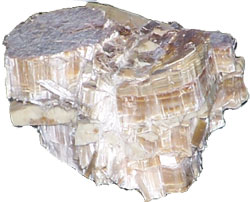Due to its strength, inability to burn and insulating properties, asbestos was popular as a building material from the early 1900s through the 1970s. Asbestos is a naturally occurring mineral mined from the earth. Where other rocks typically break down into granulars, asbestos breaks down into fibers. Asbestos is believed to have been used in over 3,500 products.
The U.S. banned the production of asbestos containing materials in the 1980s; however, the importation of such materials was not banned. Consequently they are still on the market.
An EPA study of new materials going into school buildings during new construction and renovations found that 85% of the new materials were asbestos containing.
Material classification categories
Surfacing
Any material sprayed or troweled on
Acoustical or decorative plasters
Fireproofing
Thermal System Insulation
Used to inhibit heat transfer or prevent condensation
Miscellaneous (all other materials not categorized as TSI or Surfacing)
Floor tile, ceiling tile
Roofing felts, tars and shingles
Cement piping, siding, or shingles
Types of Asbestos
Chrysotile
Most common type found in U.S.
Accounts for 95% of all asbestos materials
Amosite
Second most common type found in the U.S.
Crocidolite
The least common type found in U.S.
Most dangerous type to be exposed to due to link to mesothelioma
Tremolite, Actinolite & Anthophyllite
These are rarely founds types of asbestos
Usually are found as contaminants of other asbestos containing materials
Health Effects
A dry material that can be crushed into powder by hand pressure is considered friable. This friable condition can result in the fibers becoming airborne and when airborne the fibers become a health hazard.
Fibers cannot be seen, tasted or smelled
Fibers are only visible under a microscope
Due to their aerodynamic properties the fibers can remain airborne for long periods of time
Exposure produces no immediate side effects
Asbestos was popular in 1940’s, but workers didn’t see side effects until 1970’s
These workers didn’t know to wear protection
Primary route of entry: inhalation
Ingestion and injection were thought to be alternative routes many years ago
Asbestosis
Scarring of the lung
Reduces lung capacity
Key Symptom: Shortness of Breath
Latency Period: 15 to 30 years
Lung Cancer
Asbestos exposure is only one way to develop lung cancer
Key Symptom: Coughing up blood
Latency period: 30 years
Smokers who are exposed to fibers are 50-90x more likely to develop cancer
Mesothelioma
Rarest form of asbestos related diseases
Cancer of the chest lining
Key symptom: Extreme Pain
Spreads rapidly
Almost always fatal
Latency period: 30 to 40 years
No dose-response relationship
Regulations - OSHA & EPA
Together, these agencies established guidelines and work practices for removal activities. They specified engineering controls and personal protective equipment regulations to protect workers and occupants.
OSHA
Standards for asbestos established in 1970s after influx of negative health effects
Permissible Exposure Limits (PEL) of 0.1 fibers per cc of air for 8 hours.
Establishes PEL for 30 minutes of 1 fiber per cc
EPA
Asbestos Hazards Emergency Response Act (AHERA)
K-12 public and private schools
Must identify, inspect and maintain materials
6 month surveillances
Triennial reinspections
Notify parents, teachers and students
Following abatement activities, air levels must be either <0.01 f/cc by PCM or <70 Structures by TEM.
National Emission Standard of Hazardous Air Pollutants (NESHAP)
Inspections prior to renovations and/or demolitions of buildings
Must notify state of all demolitions regardless of asbestos
Must notify state of renovations disturbing over 160 sq ft or 260 ln ft
In certain states, EPA has designated specific state agencies to enforce the regulations that have been established
These agencies monitor all asbestos projects in their respective states
They regulate the licensing of all asbestos inspectors, designers, supervisors, and workers





